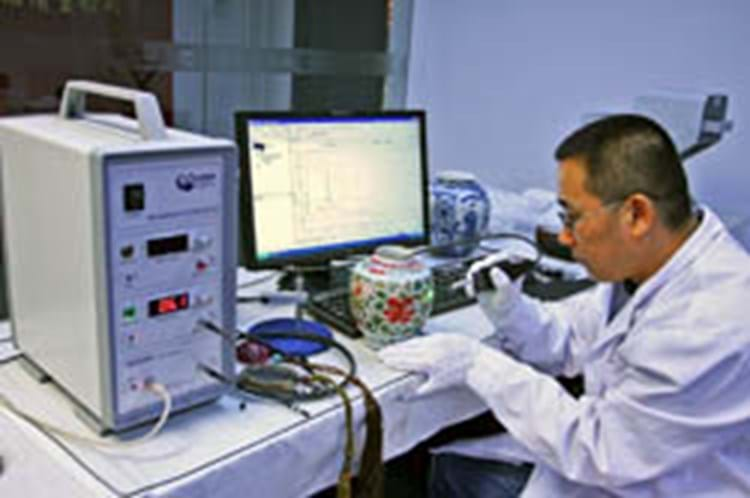
A leading appraiser using a spectrometer to help identify fakes has chosen the new state-owned superstore, Beijing Antique City, as the site to demonstrate its potential.
In 2005, ATG reported that two teams of Australian scientists were using spectrometry to analyse the glazes, pigments and 'paste' of Oriental ceramics. This 'fingerprinting' technique allowed them to record the many chemical components in a ceramic object, which together can indicate the geographic location and even the specific kiln where it was fired.
At the time the technology was just four years old, but both teams spoke of how establishing a database of chemical profiles for different regions and historical periods would be the ultimate goal of this research.
Now Guan Haisen, a regular face on the Chinese equivalent of The Antiques Roadshow, is using bespoke technology designed for him by the Florida-based company Ocean Optics.
The portable system uses a laser to 'burn' away a microscopic area of the object under test. The 'non-invasive' method removes a sample that is invisible to the naked eye and causes a plasma to form that can then be analysed for the key elements of interest, such as chemicals used to simulate the process of ageing.
The results are available immediately.
Guan Haisen's goal is to make this type of scientific verification standard practice when buying and selling Chinese porcelain: his business, Guanhaisen Appraisers Antique Technical Company, is provocatively located in the new state-owned centre Beijing Antique City.
With more than 600 dealers across four storeys, it is now the largest Chinese antiques trading centre in Asia.
Science has long been used to reveal the reproductions and fakes that are so common in the history of Chinese ceramics. Today, most ancient artefacts are dated using the thermoluminescence or TL test that, by using heat to measure accumulated radiation, gives the approximate date of the last firing.
Oxford Authentication remains commonplace in the rubber-stamping of ancient ceramic wares, and is constantly evolving, but in recent times a shadow has been cast over its reliability. It is possible to influence a TL test by exposing the ceramic object to low degrees of radiation; one recent report in the Chinese press claimed that placing porcelain in an airport X-ray check would 'age' the surface by "200 years per second".
It is the knowledge that the fakers will continue to puncture holes in "water-tight" scientific analysis that permits senior members of London's highly respected Oriental works of art trade to treat technological 'breakthroughs' with a degree of scepticism. But most remain open to the possibility that spectrometry will have a place in future connoisseurship.
By Roland Arkell




